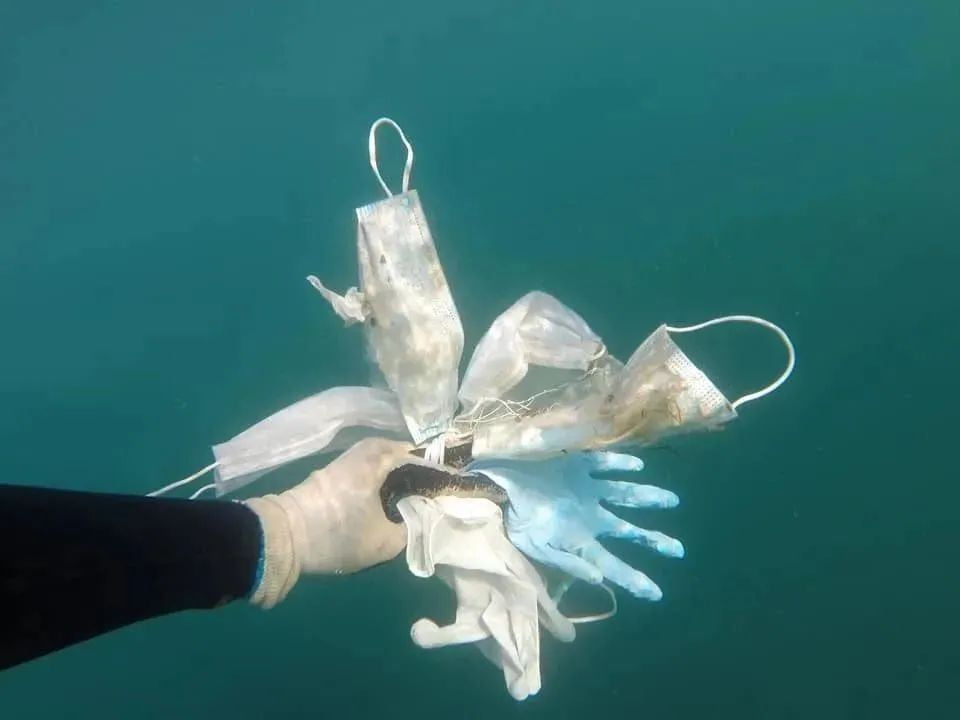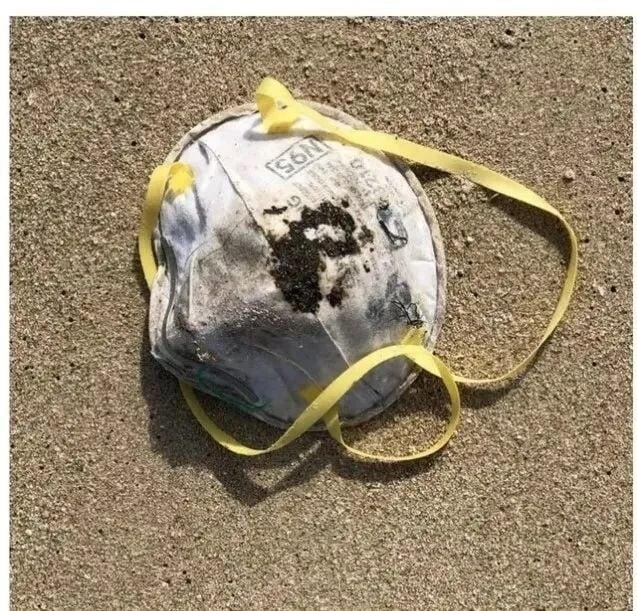Disposable masks pollution problem is more serious than plastic bags? An epidemic has made wearing a mask outside the home the norm, and to a certain extent, the mask has become our "protection god". But who would have thought that the crisis would follow.
These thin protective materials, although worn only once by humans, take centuries to degrade, and birds and marine life are now falling into the trap of those discarded masks.

In a commentary in the scientific journal Frontiers in Environmental Science and Engineering, the researchers said, "As more and more reports of mishandled masks emerge, there is an urgent need for humanity to recognize this potential environmental threat and prevent it from becoming the next plastic problem."

OceanAsia, a marine ecology research organization, found a large amount of mask litter emerging from the beach in the southwest waters of Lantau Island, Hong Kong. Nearly 70 masks were picked up in a short 100 meter area!

A French environmental group experienced the same thing when they cleaned up trash in the Mediterranean Sea and found more and more discarded protective gear such as masks, latex gloves and hand sanitizer bottles floating in the ocean.
The epidemic has triggered a sharp increase in the demand for masks and other epidemic prevention materials, and the organization estimates that if these masks cannot be properly disposed of, the number of discarded masks in Mediterranean waters will exceed that of jellyfish!

On the beautiful beach, originally full of laughter, once you can't even grab the N95, you can see it everywhere here.
The planet may no longer have pollution-free oceans! In recent decades, humans have produced about 300 million tons of plastic each year. in the decade from 2002 to 2012, humans produced more plastic waste than in the entire 20th century.
The World Conservation Organization has warned that if 1 percent of all masks are mishandled, there could be 10 million discarded masks per month.
Or to put it bluntly, according to a report by OCEANS ASIA (Organization of Asian Seas) in December 2020, at least 1.56 billion masks will be discarded worldwide in 2020 alone!
These masks are equivalent to 4,680 tons to 6,240 tons of plastic waste, or into the ocean, or hidden in the land, and the discarded masks simply rely on the natural environment to degrade, that will take about 450 years!
Do masks really degrade for 450 years?
According to a report in the journal Environmental Science & Technology, a whopping 194 billion disposable masks are used worldwide each month.
And according to a study by the American Chemical Society, if the global population used one mask per day, there would be an additional 129 billion discarded masks and 65 billion pairs of discarded gloves per month.
The amount is quite large, and if not handled correctly, the harm caused to the environment is incalculable.
Although there is not an authoritative timetable for the degradation of waste. However, the main raw material of the mask is polyethylene, etc., the general hydrolysis and microorganisms have no degradation effect on it, and it may take 400-500 years to degrade in the environment.
If not recycled like other plastic waste, masks may release more microplastics more easily and more quickly than bulk plastics such as plastic bags when they decompose in the environment. Unisex masks end up in the environment, freshwater systems and oceans where weathering produces large amounts of microplastics (less than 5mm) in a relatively short period of time (weeks) and further fragmentation into nanoplastics (less than 1 micron).
The researchers emphasize that "we know that, like other plastic debris, disposable masks can chicken out and release harmful chemical and biological substances such as BPA, heavy metals, and disease-causing microorganisms. These may cause indirect adverse effects on plants, animals and humans."
In the post-epidemic era, when old environmental problems still exist and new ones are emerging, it is particularly important to think about the relationship between human beings and nature at such a special point.
Bio-based degradable masks can solve environmental pollution problems
To solve the mask pollution problem, dozens of manufacturers around the world have started to develop biodegradable masks.
"There will be a huge market for biodegradable masks, with great demand from governments who have seen that mask contamination is becoming a serious problem," said Francois Dalibard, chief executive of French company Groupe Lemoine, which this year produced 500 million masks, "and the company that is the first to offer such masks will enjoy a huge advantage."
Chinese research and development companies in new material applications and mask manufacturing suppliers are also leading the way in promoting environmentally friendly products in response to growing concerns about environmental pollution from used masks and other types of personal protective equipment.
Industry players have gone a step further and come up with new biodegradable masks. Unlike masks typically made from petroleum-based polypropylene nonwovens and meltblown fabrics, this new mask is made from polylactic acid, usually from corn, wheat, cassava, etc., and is therefore more environmentally friendly.
PLA mask, using more than 99% compostable and degradable PLA fiber material, has natural anti-bacterial, comfortable skin-friendly, excellent anti-allergic, and biodegradable under composting conditions for a shorter period of time, bringing health protection for you and me while reducing pollution for our living environment as much as possible.

